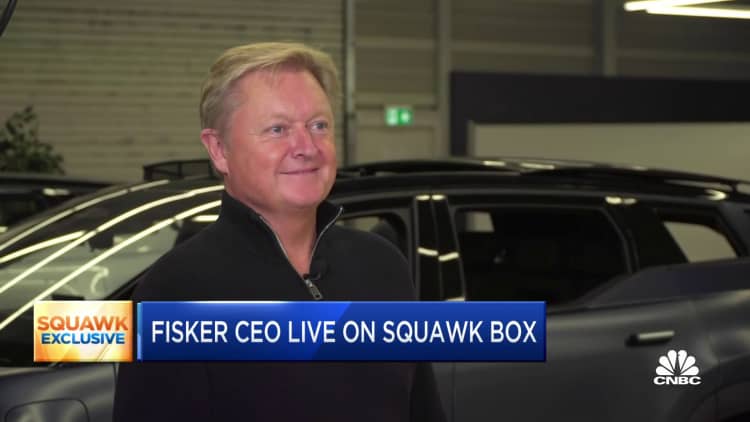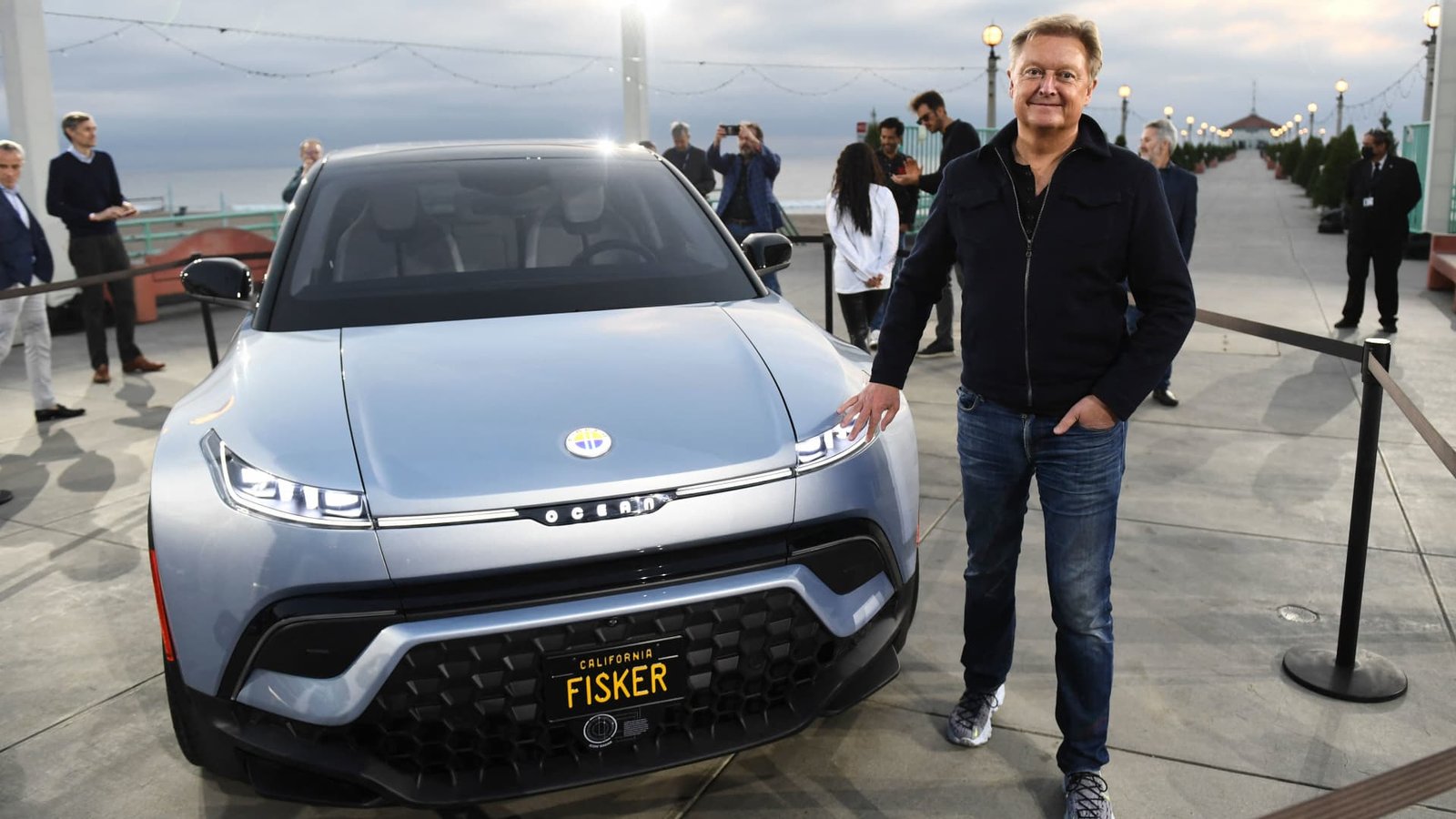[ad_1]
Henrik Fisker stands with the Fisker Sea electrical automobile after its introduction at the Manhattan Coastline Pier in advance of the Los Angeles Automobile Program and AutoMobilityLA in Manhattan Coastline, The Golden State. on Nov. 16, 2021.
Patrick T. Fallon|AFP|Getty Images
Fisker on Monday ended up being the most up to date all-electric automobile start-up to apply for Phase 11 insolvency defense in the middle of uninspired customer need, substantial cash money shed and functional and item concerns.
For financiers, the writing’s gotten on the wall surface for a long time as Fisker released a going worry regarding its capability to proceed as a business in February, leading its charming owner and chief executive officer Henrik Fisker to go away from social media sites and the spotlight.
It’s the most up to date in a collection of EV firms to collapse. Various other firms backed by unique objective procurement firms, or SPAC, have actually additionally declared insolvency defense. That checklist consists of firms such as Proterra, Lordstown Motors and Electric Last Mile Solutions. Others such as Nikola and Faraday Future continue to be in organization yet profession for under $1 per share in the middle of functional obstacles, missed out on targets and more comprehensive market headwinds.
It’s additionally a little bit of dà © jà vu, as it notes Henrik Fisker’s 2nd auto firm, both branded under his surname, to apply for insolvency defense.
The brand-new declaring follows the Fisker firm fell short to safeguard a financial investment from a large car manufacturer to survive. Almost 4 years earlier, Fisker revealed strategies to go public via a reverse merging with an Apollo-backed SPAC that valued the firm at $2.9 billion. The offer instilled Fisker with greater than $1 billion in cash money.
Fisker, like several various other firms at the time, was sustained by reduced rate of interest and a bullishness on Wall surface Road around EVs complying with the surge of united state electrical automobile leader Tesla.
” They took a look at Tesla’s success, and Tesla was even more of an abnormality than an instance,” stated Sam Abuelsamid, primary research study expert at Guidehouse Insights.

Yet customer fostering for EVs has actually expanded slower than anticipated, prices have actually climbed and financier rate of interest in EVs aside from Tesla has actually run out. The firm additionally encountered substantial concerns with its procedures in addition to the launch of its initial item, called the Sea SUV EV.
Software program focus
When going public via a SPAC in 2020, Henrik Fisker contrasted the firm with united state EV leader Tesla. He additionally proclaimed its manufacturing partnership with Canadian car provider Magna, comparing it with the relationship between Apple and Foxconn.
The automaker, unlike most of its peers, contracted a third-party manufacturer to build the Fisker Ocean crossover. The partnership with Magna was supposed to be an “asset-light” strategy, as Fisker described it, to allow the company to save cash and focus on differentiating technologies, such as software.
Abuelsamid said such a strategy isn’t inherently bad, but he called the management of the company inept and pointed the finger at Geeta Gupta-Fisker, the company’s chief financial officer and chief operating officer. Gupta-Fisker is also Henrik Fisker’s wife.
“That approach can be made to work,” he said. “The problem in the case of Fisker that I underestimated was ⦠the incompetency of the senior management.”

The company burned through cash and last month recalled thousands of Ocean SUVs in North America and Europe due to issues with vehicle software.
According to the company’s Chapter 11 filing, it owes millions to software and engineering companies, such as Adobe, SAP America, Manpower Group and Prelude Systems, among others. CNBC parent company NBCUniversal is also listed as a top creditor.
“[The auto industry is] capital intensive. You’re trying to match production, consumer demand and when they have any kind of issue with the vehicle, money has to be allocated to that,” said Stephanie Valdez Streaty, Cox Automotive Director of Industry Insights. “Also when they don’t have other revenues like [internal combustion engines] to fund it … it makes it very challenging.”
Its operating unit, Fisker Group Inc., estimated assets of $500 million to $1 billion and liabilities of $100 million to $500 million.
At the end of last year, Fisker had $530 million in inventory, as it just marketed 4,700 of the greater than 10,000 Sea EVs it had actually created in 2023.
Dà © jà vu
For Henrik Fisker, a prominent vehicle developer attributed with making the BMW Z8 and Aston Martin DB9, it’s dà © jà vu.
His initial name firm â $ ” Fisker Automotive â $ ” declared insolvency defense in 2013, quickly after he left the firm. It later on sold its assets to China’s Wanxiang Group for $150 million.
It was supposed to be better the second time around for the founder, who said he had learned from his past mistakes with his former bankrupt company.
“Having done this before, I’m in a unique position to kind of almost take lessons learned, which is very rare especially in the car industry,” he said in 2017, a year after introducing the brand-new firm.
Yet the parallels in between both fell short firms are difficult to neglect.
Both firms were much-hyped, mostly by Fisker himself declaring they would certainly transform the market. They were sustained by “totally free” cash â $ ” initial government funds, a lot more lately Wall surface Road â $ ” on the property that “eco-friendly,” or energized, automobiles were the future of the car market.
Both additionally encountered substantial top quality troubles that caused recalls. The initial Karmas created by Fisker were remembered for a battery safety and security problem and fire danger in 2011.

Both firms additionally transformed instructions and concerns sometimes.
After supplying much less than fifty percent of the greater than 10,000 automobiles it created via a direct-to-consumer method that appeared like Tesla’s version, the 2nd Fisker transformed to a dealership-based circulation version in January.
Yet there was one crucial distinction this time around. With the failing of the 2nd Fisker, its financiers were overlooked to completely dry rather than American taxpayers. While Henrik Fisker’s initial firm was enhanced by a $529 million government lending â $” $ 139 numerous which the government lost â $” the secondly was moneyed via Wall surface Road’s bullishness on SPACs and EVs. Its supply was delisted in April.
A Fisker agent stated in a declaration early Tuesday that the firm is “happy with our accomplishments” yet established that Phase 11 was the most effective alternative.
” Like various other firms in the electrical automobile market, we have actually encountered numerous market and macroeconomic headwinds that have actually influenced our capability to run successfully,” the agent stated in a launch. “After examining all alternatives for our organization, we established that waging a sale of our possessions under Phase 11 is one of the most practical course onward for the firm.”
[ad_2]
Source link




